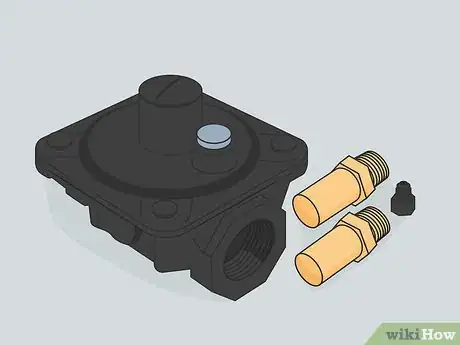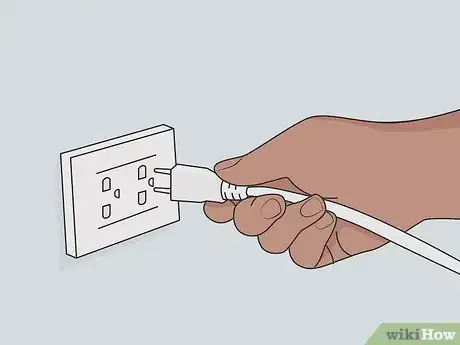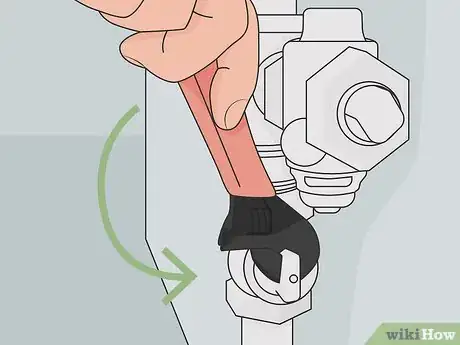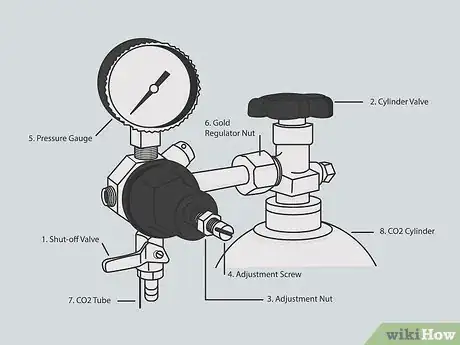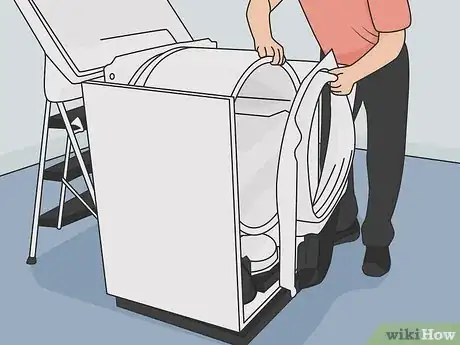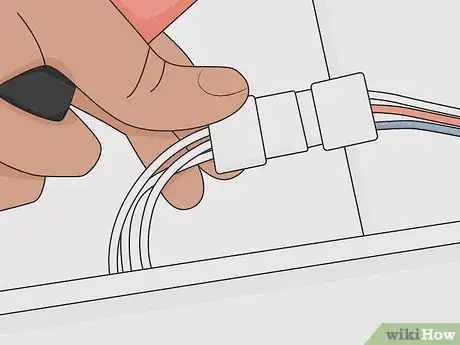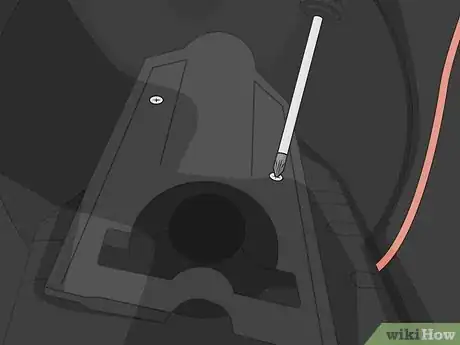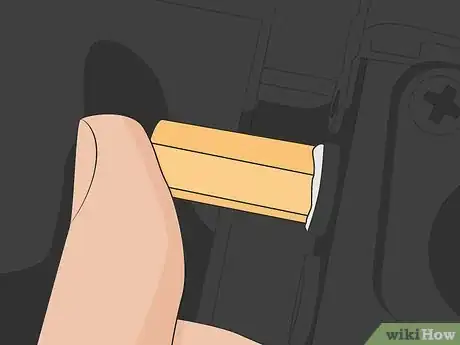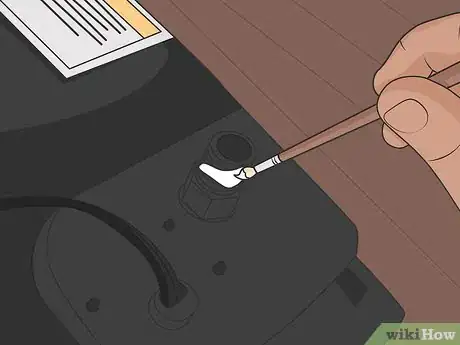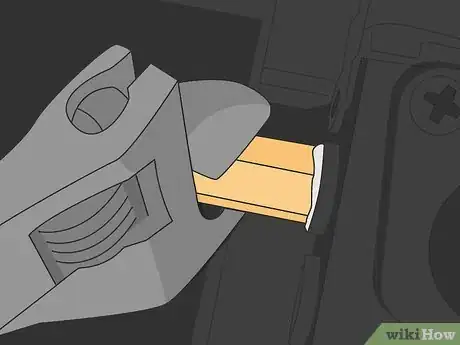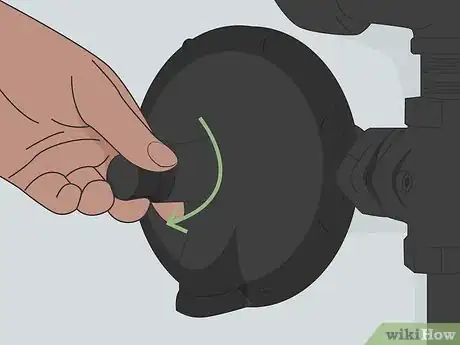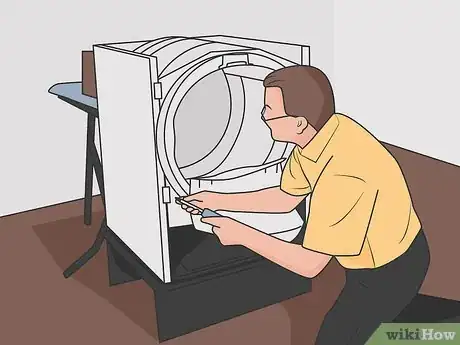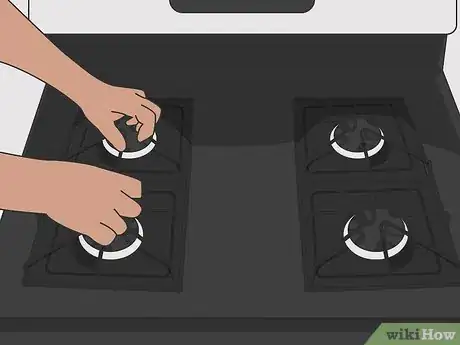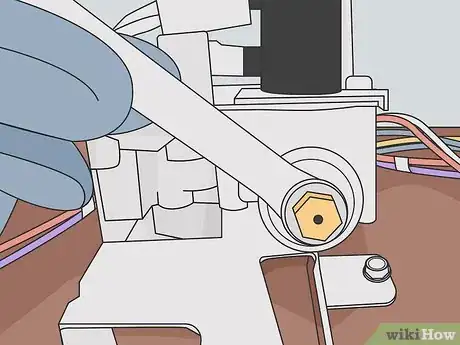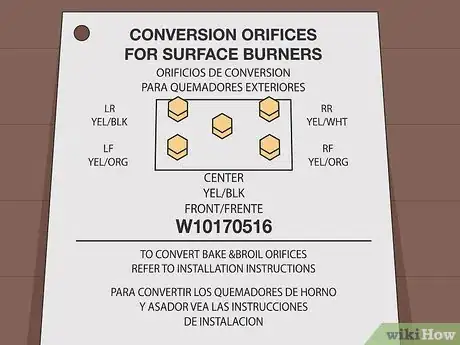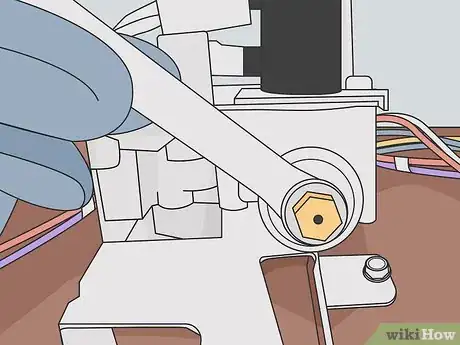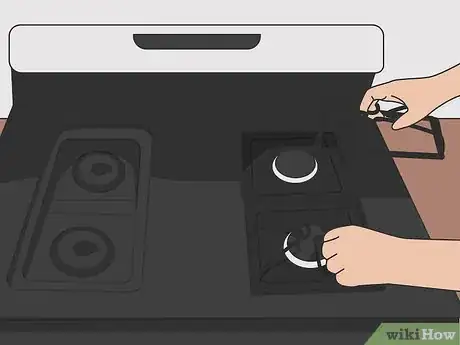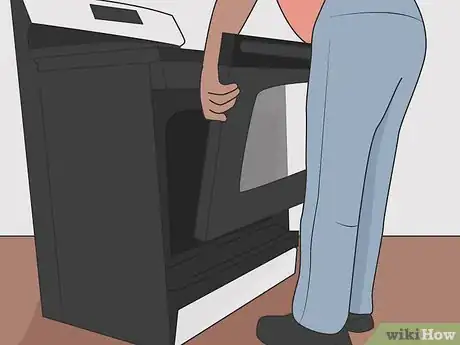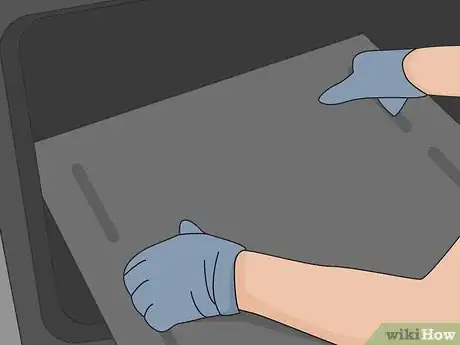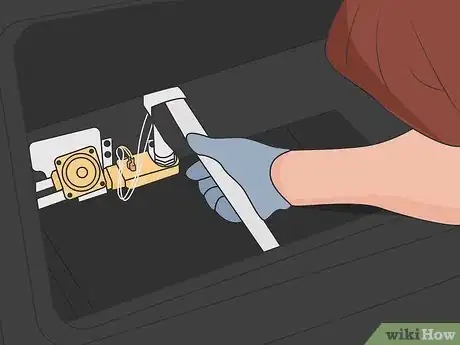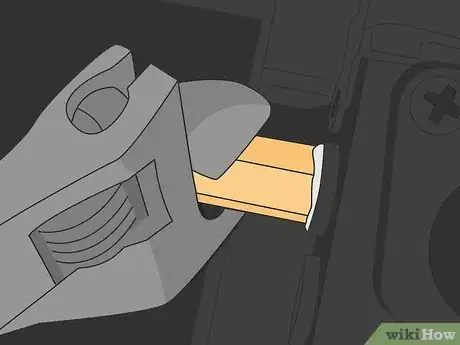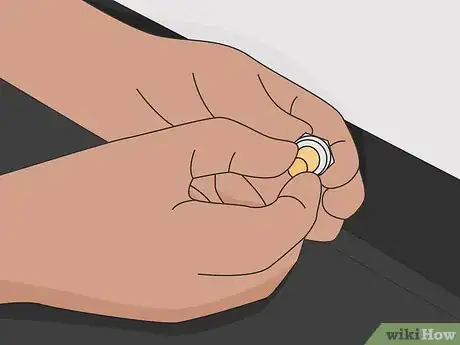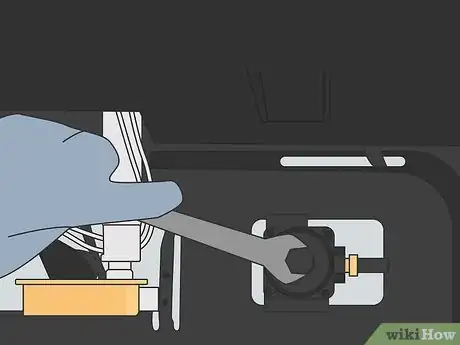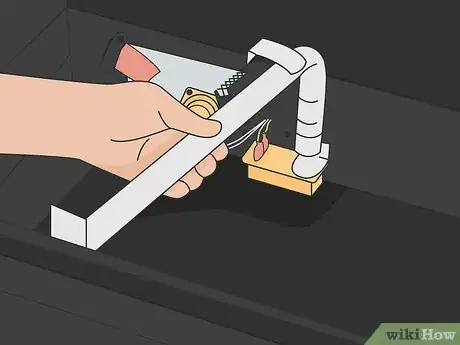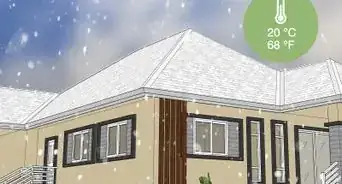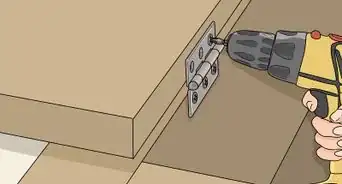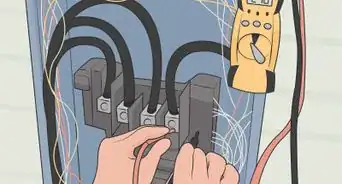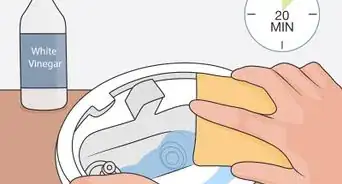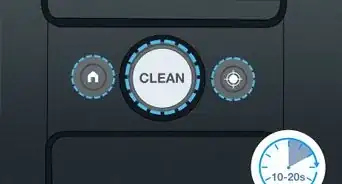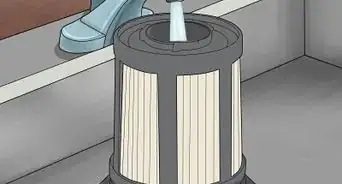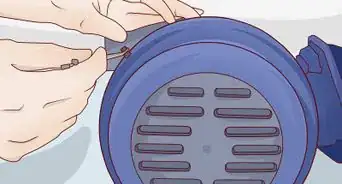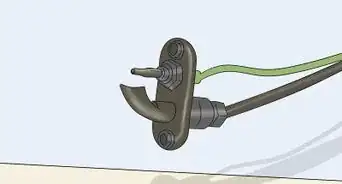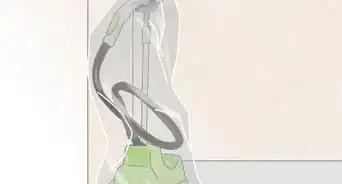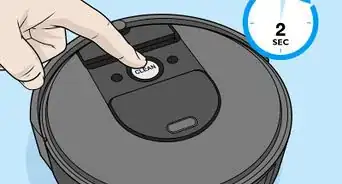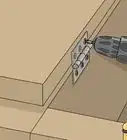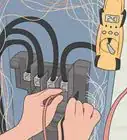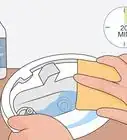This article was co-authored by wikiHow staff writer, Eric McClure. Eric McClure is an editing fellow at wikiHow where he has been editing, researching, and creating content since 2019. A former educator and poet, his work has appeared in Carcinogenic Poetry, Shot Glass Journal, Prairie Margins, and The Rusty Nail. His digital chapbook, The Internet, was also published in TL;DR Magazine. He was the winner of the Paul Carroll award for outstanding achievement in creative writing in 2014, and he was a featured reader at the Poetry Foundation’s Open Door Reading Series in 2015. Eric holds a BA in English from the University of Illinois at Chicago, and an MEd in secondary education from DePaul University.
There are 23 references cited in this article, which can be found at the bottom of the page.
This article has been viewed 17,875 times.
Learn more...
An LP (liquid propane) gas conversion kit is a set of adaptors that allows natural gas appliances to work with propane gas lines. When you buy a new appliance, it may come with this conversion kit, although you’ll need to buy one for your specific appliance if you don’t have a kit. Unfortunately, this process can be fairly complicated and you may need to call a professional to convert your appliance if you get stuck or can’t access the pressure regulator.[1] Also, if you’re converting a stove, make sure that you convert the stovetop and the oven range before hooking it back up to your gas line.
Steps
Important Safety Precautions
-
1Choose an LP gas conversion kit designed for your appliance. Use the LP conversion kit that came with your appliance if it came with one.
If you bought a third-party LP conversion kit, read the instruction manual and label thoroughly to make sure your specific appliance is listed as compatible. These kits are not universal, so just double-check to make sure your kit matches the appliance.[2]
Some appliances have built-in conversion kits where you can just turn certain screws or nuts to change the gas output. If you have a new appliance and you don’t have a conversion kit, you may have built-in converters.[3]
This process involves messing with your appliance’s gas lines. If you do not have your appliance’s instruction manual and you do not have the correct adaptor kit, you cannot safely do this.
You must hire a professional if you want to convert the gas source for a water heater or HVAC system. The risks are just too high if you make a mistake.[4] -
2Unplug your appliance to avoid shocking yourself. If your appliance is already hooked up, unplug it from the outlet and pull it out away from the wall. This will keep you from getting shocked if you accidentally touch a wire or something like that.[5]
- Many appliances have a built-in battery, so read your instruction manual to see if there’s an independent power source you need to turn off as well.
Advertisement -
3Shut off the gas supply for the appliance and disconnect the hose. If your appliance is already hooked up, turn the valve near the wall where it connects to the gas hose so that the valve rests parallel to the wall.
It may take a bit of force to shut the gas off, but you should be able to close it by hand. Once this valve is closed, disconnect the gas hose on your appliance by sliding it out or twisting it counterclockwise.[6] It’s okay if you smell a little bit of gas after disconnecting the hose, but the odor should not linger.
If you smell gas more than 30 seconds after you’ve disconnected the hose, double-check the valve to make sure that you shut it off all the way. Call your utility company if you can’t identify the source of the gas smell.- You do not need to do this if your appliance isn’t connected to a gas line yet.
Clothes Dryer
-
1Refer to the instruction manual to find the pressure regulator. On a dryer, you only need to convert the pressure regulator to switch from natural gas to propane. The location of the regulator differs from brand to brand, so read your appliance’s instruction manual to locate the regulator. On most dryers, the regulator is tucked behind the back panel near the bottom of the machine.[7]
- The pressure regulator is a box-like assembly with a cap on top that feeds into your dryer’s burner. If you follow the gas line as it feeds into your dryer, it’s the first structure that the pipe will feed into. The regulator’s job is to control how much gas your dryer consumes when it fires.
- This process can be pretty complicated. If you can afford it, hire a professional to do this.[8] It typically costs $150-200 to have a service technician convert a dryer.
- Read your appliance’s instruction manual to see if you need to disconnect anything before removing any panels or toying around with the regulator. Some dryers have an independent battery that must be disconnected before doing this.[9]
-
2Remove the bulkhead, drum, or back panel to access the pressure regulator. Depending on where the pressure regulator is located, you may need to remove the back panel, bulkhead, or drum.
Use a screwdriver or hex wrench to unscrew any panels you need to remove to access the pressure regulator. Set the panels aside and keep any screws or nuts separated so you can put the dryer back together when you’re done.[10]
The bulkhead is the large cover that conceals the drum, which is the cylinder that spins when your dryer is running. The back panel is the flat cover on the back of your dryer.
The hardest part of this process is accessing the regulator. Since this is different for every make and model, there’s no real trick here. You’ll just need to refer to your manual for this part.
If you can’t find your manual, search online. Most manufacturers publish their instruction manuals as PDFs for anyone to search up. You can also watch a tutorial of someone converting the gas source on your specific dryer to make things easier. -
3Pull out any cable connections to avoid getting shocked. Once you’ve removed any panels you need to take out, you may see cables plugged into plastic cable connectors near your regulator. Disconnect any cables you come across by sliding them out of their connector just to be on the safe side.[11]
- Cable connectors you see near the pressure regulator typically connect a backup battery or surge protector.
- If you see cables that aren’t plugged into a connector, just ignore them. The battery cables always have a connector.
-
4Remove the burner in your dryer by unscrewing it and pulling it out. The burner is the long, metal cover that connects your regulator to the drum. Inspect the top of the burner to see how it’s connected to the frame.
Use a screwdriver or wrench to unlock the burner and slide it out of the dryer. The regulator’s orifice is underneath the burner where it connects to the regulator. This is the part you need to swap out to convert your dryer.[12]
The burner is the long, thin pipe leading out of the pressure regulator into the drum. When the regulator releases gas, the burner fires and heats it to help your clothes dry.
An orifice is a general term for any nut or valve that regulates pressure. To make a long story short, orifices restrict gas flow and control how much gas enters an appliance from the regulator. On appliances, orifices are almost always gold, and they’re typically 1 in (2.5 cm) in length or shorter.
Depending on where your burner and regulator are located, you may need to use a special 90-degree wrench or screwdriver to remove the burner. -
5Unscrew the preinstalled regulator orifice with a wrench. On the end of your regulator, there is a gold nut that connects to the burner. This is your regulator orifice. Use a wrench to unscrew this nut from the end of the regulator and remove it.[13]
- Propane and natural gas burn at a different rate. The gas enters the regulator and comes out of the assembly through your regulator’s orifice. By swapping this piece out to an orifice with a smaller opening on it, a dryer that’s designed to burn natural gas can burn propane at the same rate and speed.
-
6Apply a thin layer of thread sealant to the threading on your new orifice. Take your new orifice out of the conversion kit’s packaging. Use a small brush to spread a thin layer of thread sealant around the threading on your new orifice. When this sealant dries, it will keep gas from leaking through the orifice.[14]
- You must purchase thread sealant separately. You can pick it up at any hardware or construction supply store. Any general thread sealant will work for this.
- The conversion kit’s orifice should look identical to your old orifice, so don’t get them mixed up!
-
7Install the new orifice and tighten it with a wrench. Slide your new orifice into the opening on your pressure regulator by hand and turn it clockwise until the threading catches. Then, use your wrench to tighten the orifice into the regulator. Continue tightening the orifice until you feel some resistance and you can’t see the threading on the orifice where it meets the regulator.[15]
-
8Adjust the pressure regulator’s hex cap based on your appliance’s instructions. On top of the pressure regulator, there is a small screw that’s usually made of plastic.
Read your instruction manual to see which direction this cap needs to be turned to complete the process. On most appliances, you use a screwdriver or wrench to twist the hex cap 1 full rotation clockwise to tighten the opening in the regulator and restrict the gas flow a little bit.[16]
The tightness of the hex cap basically controls the amount of gas that your pressure regulator holds at any given time. Since different regulators have different pressure requirements, you must follow your appliance’s instruction manual to determine how far you need to turn the hex cap.
There may be a plastic cap on top of the hex cap to protect it. You can usually pop this cover off with a flathead screwdriver. In some dryers, you unscrew the hex cap completely and then reinstall it pointing in the other direction. -
9Reassemble the burner and dryer panels to finish the conversion. Once you’ve swapped out the orifice and adjusted the hex cap, slide the burner back into place. Reinstall the screws or nuts to tighten the burner. Then, reconnect any cables by matching the color-coded wires to one another in the connector. Finish by reinstalling any panels you removed.[17]
- Reconnect the gas hose entirely before reopening the valve on the gas connection.
- If you smell gas when you aren’t using your dryer in the future, call your utility company to report the gas and hire a service technician to fix your dryer.
Stovetop
-
1Remove the grates and orifice covers on each burner. Take the metal grates off of each stovetop burner. Each burner has a cover concealing the orifice underneath. The orifices are the small gold cylinders that sit inside of each burner and point up at the top of the stove, and these are the parts you’re going to replace.
On some stoves, you can just lift the orifice covers off. On others, you must twist them counterclockwise or unscrew them from the top of the stove to remove them. Take all of your orifice covers off.[18]
The orifice covers are the round plates that sit underneath the grates to cover the orifices. If your stove has 4 burners, you’ll have 4 orifice covers.
On a stove, you need to convert the orifices under each burner on the top of your stove. You also need to convert the pressure regulator and burner in the range. You can swap out the stovetop orifices first, or swap out the regulator and burner first. The order doesn’t matter. -
2Take out the old orifices with a socket wrench. Find a socket wrench the matches the size of the orifices hiding inside the center of each burner.
Then, peel off a piece of tape, ball it up so that each side is sticky, and slide it inside of your socket wrench. Use your socket wrench to unscrew each orifice and carefully lift them up out of the stove.[19]
If you don’t put a small piece of tape inside of the socket, the orifices may fall out of the wrench as you’re lifting them up and get stuck inside of the stovetop. They can be a bit of a pain to retrieve, so you really don’t want to drop them! -
3Follow the conversion kit’s instructions to determine which orifice goes where. The conversion kit typically comes with 4-6 smaller orifices for the stovetop. Since the burners on a stovetop aren’t identical, these conversion kit orifices are color coded. Refer to the chart that came with your conversion kit to determine where each orifice needs to be installed in your stovetop.[20]
- The orifices aren’t identical because the gas has to travel different distances to reach each burner. In addition, there is normally a simmer burner that’s different than the other 3-5 burners. The only way to know which orifice belongs in a given burner is to follow the chart that came with your conversion kit.
-
4Screw the conversion kit orifices into your stovetop with a socket wrench. Ball up a new piece of tape and slide it inside the socket wrench. Slide the first conversion orifice into the end of the socket wrench with the threading pointing down.
Carefully slide the orifice down into the first burner and screw it into the opening in the middle. Tighten the orifice until it won’t turn any further. Repeat this process with the 3-5 remaining burners by screwing the new orifices into place.[21]
Once you’ve replaced the orifices on the stovetop, the top of your stove is done. You still need to adjust the pressure regulator and replace the orifice on the burner, though. -
5Reassemble the orifice covers and grates to finish the stovetop. Take the orifice covers and slide them back over the top of your stove. Screw or twist them back into the stovetop. Then, put your grates back in place on top of the burners.[22]
- You must convert the regulator and burner inside of your oven range before you can use your stovetop with a propane gas line.
Oven Range
-
1Remove the door to the oven range to make things easier. Read your oven’s instruction manual to see how the door is removed. Typically, you open the door 6–12 inches (15–30 cm) and lift the door out of the slots that connect it to the frame at the bottom.[23]
- The range is the compartment underneath your stovetop where you bake and broil food.
- Take out the metal shelves inside of the range after doing this.
-
2Take out the base of the oven range to access the burner. There is likely a flat metal floor inside of your oven’s range. Slide the floor out of the slots in the sides of the oven to remove it, or remove the screws near each corner to unlock it. Lift the floor panel out of the oven range and set it aside.[24]
- On some stoves, the pressure regulator is located underneath the range. If your stove’s regulator is under the burner, remove the sliding drawer on the bottom of your stove. You may need to remove the back panel by unscrewing it and lifting it out if the regulator is tucked in the back of the stove.[25]
-
3Lift the burner out of the frame to access the regulator’s orifice. The burner is the long metal bar that runs from the front to the back of your range in the middle.
You can typically just slide the burner out of the slots where it’s resting in the front and back of the range. If there are screws holding the burner in place, unscrew them before lifting this piece out.[26]
When you turn the oven range on, gas feeds into the pressure regulator. Once the regulator reaches a predetermined pressure, it feeds gas into the burner, which ignites and produces heat.- There may be a metal cover on top of your burner. You can typically just lift this cover off.
-
4Take the orifice off of the pressure regulator and install the new orifice. The pressure regulator is the bulky assembly with an orifice sticking out of the side that feeds into the burner.
Use a wrench to unscrew this gold orifice and set it aside. Grab the orifice that came with your conversion kit and slide it into the pressure regulator. Turn it by hand until the threading catches and tighten it with your wrench.[27]
The size of the opening on the end of this orifice determines how much gas comes out when you turn the range on. Since propane and natural gas burn at different rates, changing the size of this opening allows your natural gas appliance to burn propane at the same rate without throwing off your temperatures -
5Flip the hex cap around or tighten the hex cap to convert the gas. The hex cap is the small nut on top of the pressure regulator that controls how much gas feeds into your oven.
Read your oven’s instruction manual to see how you convert the hex cap. In some instances, you unscrew the hex cap with a wrench and turn it around to install it the other way. On some appliances, you tighten the hex cap 1 full rotation to adjust it for propane.[28]
The hex cap for the regulator may be underneath the oven. You may need to carefully turn the stove on its back to access this cap. -
6Loosen and slide the screw on the end of the burner to convert the gas. On the end of your burner, there is one screw attached to a slide. It should say “NAT” next to this screw, and it should read “LP” underneath.
Loosen this screw halfway and slide the screw down the groove in the burner until it lines up next to the “LP.” Then, tighten the screw inside of the slide.[29]
If your oven range has a broiler, you must repeat this process with the burner on the top of your oven range. -
7Reassemble your burner before reinstalling the range base. Take your burner and slide it back into the base of your oven range so that the orifice feeds back into the burner.
Then, slide the base panel back on top of the burner and regulator. Either slide it into place or screw it back into the base of your stove. Reattach the gas hose and plug the oven back in before sliding it back into place.[30]- If you smell gas in the future when you aren’t using your stove, contact your utility company and call a service technician to come out and check your work.
Warnings
- You must hire a professional to convert a radiator or water heater from natural gas to propane and vice versa. The risks are simply too high if you attempt to do it yourself and there’s a leak. You could risk filling your home or building with gas, which may lead to an explosion.[31]⧼thumbs_response⧽
Things You’ll Need
- Instruction manual
- Screwdriver
- LP conversion kit
- Wrench
- Socket wrench
- Nut driver
- Pliers
- Thread sealant (optional)
References
- ↑ https://www.propane101.com/lpgasapplianceconversions.htm
- ↑ https://c.searspartsdirect.com/mmh/lis_pdf/INSTL/1706047L.pdf
- ↑ https://youtu.be/SIuHt7jWD4E?t=117
- ↑ https://dms.hvacpartners.com/docs/1009/public/04/ag-kganp-04.pdf
- ↑ https://www.navieninc.com/app/W1siZiIsIjIwMTgvMDIvMTAvMDEvMjUvMTYvOThiOTc5YmMtMzM1Mi00MmFmLWFkYTUtNzY4N2I4YzJiNWEzL05QRV9HYXNfQ29udmVyc2lvbl9HdWlkZV9Fbl8xNjAzMTAucGRmIl1d/NPE_Gas_Conversion_Guide_En_160310.pdf?sha=11710a0fdade68a9
- ↑ https://dms.hvacpartners.com/docs/1009/public/04/ag-kganp-04.pdf
- ↑ https://products.geappliances.com/MarketingObjectRetrieval/Dispatcher?RequestType=PDF&Name=31-11028.pdf
- ↑ https://products.geappliances.com/appliance/gea-support-search-content?contentId=21998
- ↑ https://climate.emerson.com/documents/36h-series-gas-valves-instructions-en-us-1570102.pdf
- ↑ https://youtu.be/0dJTbz8tydU?t=141
- ↑ https://youtu.be/iP5cnWDgui8?t=133
- ↑ https://youtu.be/P5oRgWHuxWo?t=224
- ↑ https://youtu.be/P5oRgWHuxWo?t=227
- ↑ https://youtu.be/P5oRgWHuxWo?t=271
- ↑ https://youtu.be/P5oRgWHuxWo?t=290
- ↑ https://files.bbystatic.com/oHlF7DX4YG6QNzh2GxkDJQ%3D%3D/3DE44343-0FF3-4F55-B97A-1D7FBBB49024.pdf
- ↑ https://climate.emerson.com/documents/36h-series-gas-valves-instructions-en-us-1570102.pdf
- ↑ https://youtu.be/ZcflVxQ2vss?t=96
- ↑ https://products.geappliances.com/MarketingObjectRetrieval/Dispatcher?RequestType=PDF&Name=31-11028.pdf
- ↑ https://www.samsung.com/za/support/home-appliances/which-samsung-gas-ranges-can-be-converted-to-liquid-propane/
- ↑ https://products.geappliances.com/MarketingObjectRetrieval/Dispatcher?RequestType=PDF&Name=31-11028.pdf
- ↑ https://youtu.be/ZcflVxQ2vss?t=288
- ↑ https://youtu.be/ZcflVxQ2vss?t=304
- ↑ https://youtu.be/ZcflVxQ2vss?t=332
- ↑ https://thorstove.com/resources/pdf/LP-manual-LRG3001U.pdf
- ↑ https://youtu.be/ZcflVxQ2vss?t=434
- ↑ https://products.geappliances.com/MarketingObjectRetrieval/Dispatcher?RequestType=PDF&Name=31-11028.pdf
- ↑ https://thorstove.com/resources/pdf/LP-manual-LRG3001U.pdf
- ↑ https://thorstove.com/resources/pdf/LP-manual-LRG3001U.pdf
- ↑ https://youtu.be/ZcflVxQ2vss?t=683
- ↑ https://dms.hvacpartners.com/docs/1009/public/04/ag-kganp-04.pdf
